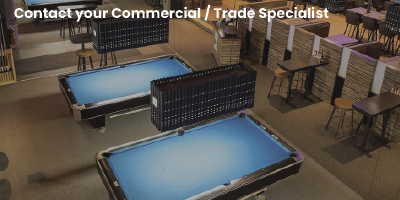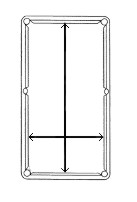Finding the Right Jigsaw Puzzle for You
John Roufas2023-08-08T22:50:52-04:00Finding the Right Jigsaw Puzzle for You
Completing a jigsaw puzzle is a relaxing but sometimes challenging way to pass the time. The common thought is that they may have been created as a teaching tool for geography in the late 18th century as country-shaped pieces were cut in wood with a Jig Saw that could be assembled to form Europe. Since then they have become a very popular way to relax and take your mind off things Whether you are teaching yourself rudimentary travel or just looking to spend some time away from the TV, here are few things to keep in mind when picking the perfect puzzle.
1. Puzzle Size
Probably the most obvious factor to plan for when getting a puzzle for yourself or for someone else is the size of the surface you plan to work on, either the table or the roll or mat. Not only will you need the space required for the final piece, but it is a good idea to give yourself at least half as much again for sorting pieces and setting the box up to look at, unless you have an excellent memory for puzzle images. One thing to be wary of is the panoramic puzzle. Although you may be used to completing 1000-piece puzzles on your kitchen table, be ready to need a much wider space if you go for a wide angle panoramic.
2. Puzzle Piece Count
The rule of thumb is “more pieces more difficulty”, and all other factors being equal, that is very much the case. However, a puzzle with 1000 pieces not just twice as difficult as a puzzle of 500 pieces. Rather, the difficulty level increases a bit more than that. Younger puzzlers, or those just wanting a nice short experience, would probably find a 500-piece puzzle most appropriate, and many people prefer 1000-piece puzzles as the most common count. If you really like a picture or if it is full of recognizable distinct clues throughout the puzzle 1500 and 2000-piece puzzles are not really a stretch (check your table size). Anything bigger is generally for experienced puzzlers or someone who is truly looking to kill a lot of time or have a bit of help. Do not feel limited though. Puzzles of anywhere up to 42,000 pieces are waiting for you and your entire living room floor.
3. Puzzle Piece Shape
Not all puzzle pieces are equal – in more ways than one. Many characteristics such as size and quality are discussed elsewhere in this guide, but there are two very common types of cut used when creating puzzle pieces, which are presented in Figure 1: ribbon cut and random cut.

i. The first is a ribbon cut, which can be a little difficult as it creates a very uniform type of piece that is roughly square in shape with standard knobs and holes (there is no standard name for interlocking parts of the piece – innies/outies, pegs/holes, keys/locks, chads, etc.). The advantage to this type of cut is that it helps provide a spatial reference for large sections of puzzles or for the outer boarder. The disadvantage, as was stated, is that the shapes can be very repetitive and are not always easily distinguished when doing large areas of similar color. This type of cut is also known as a traditional – or sometimes a strip – cut, as the puzzles can be joined in strips of faintly recognizable columns and rows, as can be seen in Figure 2. A small list of companies using ribbon cut includes Trefl, Clementoni, Ravensburger, Jumbo and BePuzzled.

Ravensburger Ribbon Cut Jigsaw Cutting Blade

Random Cut Jigsaw Puzzle Pieces

4. Puzzle Piece size
Younger puzzlers and puzzlers with visual or dexterity issues often prefer a larger piece when doing puzzles. Many puzzle companies offer a special collections of lesser piece count puzzles with larger pieces that are easier to see and hold. They are commonly called jumbo piece, large piece, etc. Moreover, Cobble Hill has a special line of Family Puzzles with a mixture of large and regular piece puzzles to be done by young and old together. For the more masochistic puzzler, mini puzzles make great gifts and stocking stuffers.
5. Puzzle Dust
One common by-product of puzzle production is puzzle dust. The particulate cardboard found in the bag after all the pieces have been dumped out into the box. This is often a sign of a less than perfect die cut during the stamping or rolling cut process. Although this dust is pretty harmless, it can be annoying when it gets onto the table. Some more serious puzzlers will strain their pieces as they pull them from the bag. If you are working with a particularly dusty puzzle, it is a good idea to use a sawdust cloth to wipe the puzzle before gluing it together for framing.
6. Puzzle Thickness
Another characteristic of puzzle quality is board thickness. 2mm is a really good thickness for a puzzle, and higher-quality puzzles will be near that thickness. Obviously, the thicker the puzzle board the more consistency you will find when you assemble your creation. Equally, the pieces will be less likely to bend, fray or arrive bent from a rolling cut process.
7. Puzzle Image Glare
There are some companies that have introduced methods to reduce the glare that appears on the picture which sometime makes lighting difficult for puzzling. One method is that used by Ravensburger with its linen-weave paper. If you find that a puzzle has a high-gloss finish, you can try repositioning your light, but it may be that you want to try alternate puzzle companies.
8. Theme
Some puzzlers often follow specific themes, while others like to change them up on a regular basis. Fortunately, with the wide range of puzzle companies out there, there is always something for everybody. When looking for themes, sometimes you need to become familiar with the puzzle brand’s categories, collections, or artists. Browsing and looking through shelves of images for what you like can sometimes be as enjoyable as completing the puzzle, but a good retailer will often bring out catalogues and explain each brand’s popular collections and artists.
9. Imagery
Very similar to the subject of theme, there is no consistent vocabulary for the images categorized from brand to brand – especially for some puzzle companies, imagery can be abstract, collections of smaller images, recognizable or fantastic maps, high definition photography, realistic artwork, and sometimes a monochromatic sheet. Very often puzzle brands become known for special types of imagery, and puzzlers will stay with them, but as we will see with artists below, some images and artists will jump ship as brands buy images and use them in new and interesting ways given the modern day ability to alter visual art so quickly. This is definitely something to look into with the help of a puzzle expert.
10. Puzzle Collections
Probably the best way to find a series of puzzles is to look for collections. Often a puzzle company will commission an artist or a very particular style to be applied to a series of subjects. This not only provides a reliable experience, but if you are someone who likes to keep your puzzles, it is often rewarding to create a collection of images that look nice together when framed on a wall or will often be designed to flow from one image into the next creating a much larger picture using multiple smaller puzzles.
11. Shaped Puzzles
Generally, these are more difficult than the more common rectangular puzzle. Edge pieces are a puzzler’s best friend when trying to create a special reference. However, when those edges are not straight, that is not always the case. Moreover, it also makes it a little more difficult to frame a puzzle that is shaped like an animal’s face or your favorite cartoon character.
12. Artists
Puzzlers will often find themselves attracted to puzzles of a certain type and style, and often they never realize that the style is the work of a single artist, as the name of the artist is not always prominent in the title. However, it may be worthwhile to start looking for the names of the artists that create the images you prefer and search out their works in other collections and even in other puzzle companies. Feel free to ask for help from the associates in our stores.
13. Gimmicks
Every now and then it is fun to shake things up with your puzzle hobby. Some companies put different spins and challenges in their puzzles to make things a little more interesting or difficult. This can be as simple as monochromatic pieces such as the Krypt puzzles from Ravensburger or as tricky as the Wasgij collections of puzzles Destiny, Mystery, and Original that only offer a hint at the ultimate image instead of a picture on the box cover. Equally interesting are the Mystery Puzzles by Bepuzzled, which are solved after reading a story leading up to the final scene in the puzzle. For another level of difficulty, try a double-sided puzzle. Not only do you get two puzzles, but the added challenge of not being certain which side of the piece you are using extends your enjoyment of both images.
14. Puzzle Accessories
Once you have your puzzle, there are a few things that you can get to make puzzling more convenient and easier on your back. Obviously, good lighting is a bonus, but along with that you might need a way to store your puzzle when it is still in an unfinished state. Perhaps you need the table for dinner, company is coming over, or you have a four-footed friend who likes to hide puzzle pieces when you go to bed. Puzzle rolls, as are shown in Figure 5, are a nice way to store your puzzle and can handle larger-sized puzzles than the next option, a puzzle store or portfolio. Portfolios are a very convenient way to hold your puzzle without worrying about bent or slipping pieces. Also, they offer a way to store your organized pieces in either trays or on different mats with the puzzle, as you can see in Figure 6. Even if you do not plan on putting the puzzle away each night, storage trays are also extremely useful for keeping pieces organized by color, type, or whatever method you choose. Finally, for someone who is tired of sore necks, there are easels available that hold the pieces up at an angle and keep your neck straight.

Jigsaw Puzzle Roll UP

Porta Puzzle Jigsaw Puzzle Storage Case
15. Puzzle Glue
Once you have finished your puzzle, you might want to keep it and hang it on a wall. Why not? If it was interesting enough to spend hours putting it together, it might be worth showing it off. Most puzzle glue works by spreading out a thing layer of clear glue on the face of the puzzle which penetrates the puzzle pieces and then dries clear. This may be done with a brush or usually it is more convenient to use a sponge.
16. Puzzle Framing
Some puzzle companies offer specially sizes frames for their puzzles. However, it is important to know that puzzles brands are not consistent when it comes to size. Even when they are the same piece count, there is often a slight difference in overall width and height which means that your Ravensburger will not fit in a frame for a 1000-piece Eurographic puzzle.
17. Ecology
Puzzle companies, like other industries, are starting to recognize their impact on the environment. Some companies such as Eurographics are beginning to use recycled cardboard and non-toxic dies for their puzzles and are replanting forests, recognizing that paper production is having its impact.
18. Missing Pieces
It happens. Just like in every other industry in the world, every now and then a puzzle will get through missing a piece or possibly having damaged pieces. Puzzles are sealed at the factory and obviously cannot be inspected again and again on the way to the final user. Most high-end puzzle manufacturers have methods for identifying and sending you a replacement piece, patch kit or other item to allow you to finish your puzzle, and they ask that you do that. Often you can find the information you need to contact the company on an insert in the box or simply on their website. You would be surprised. Good puzzle manufactures are just as excited for you to finish their puzzle as you are, and they have methods and people whose sole purpose is to help you.




